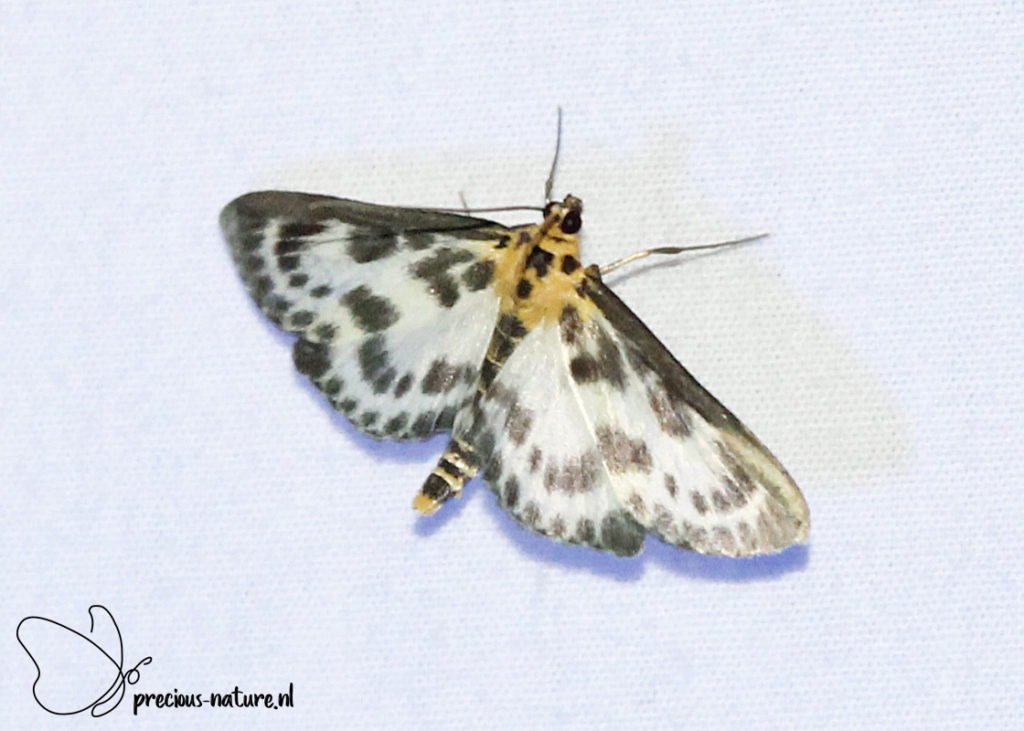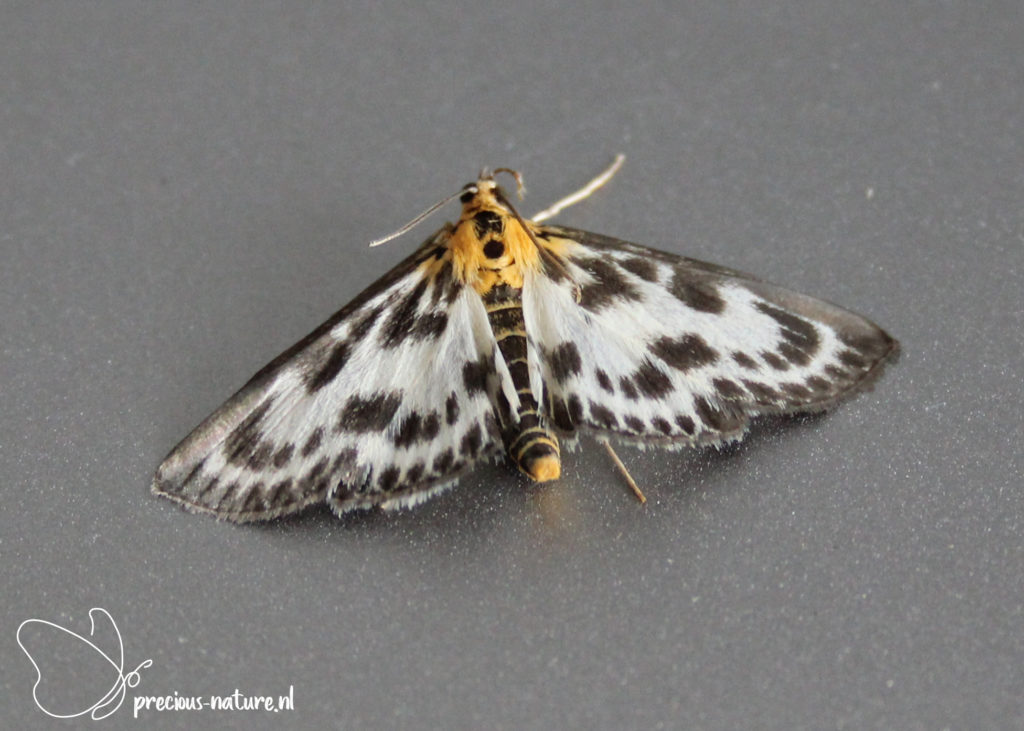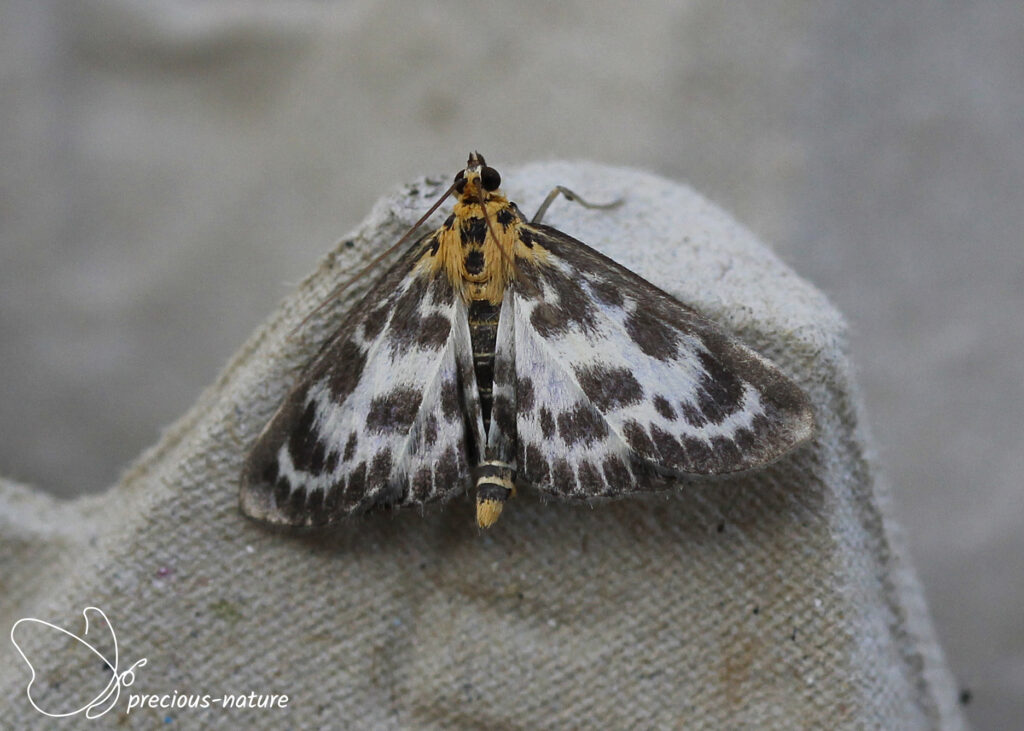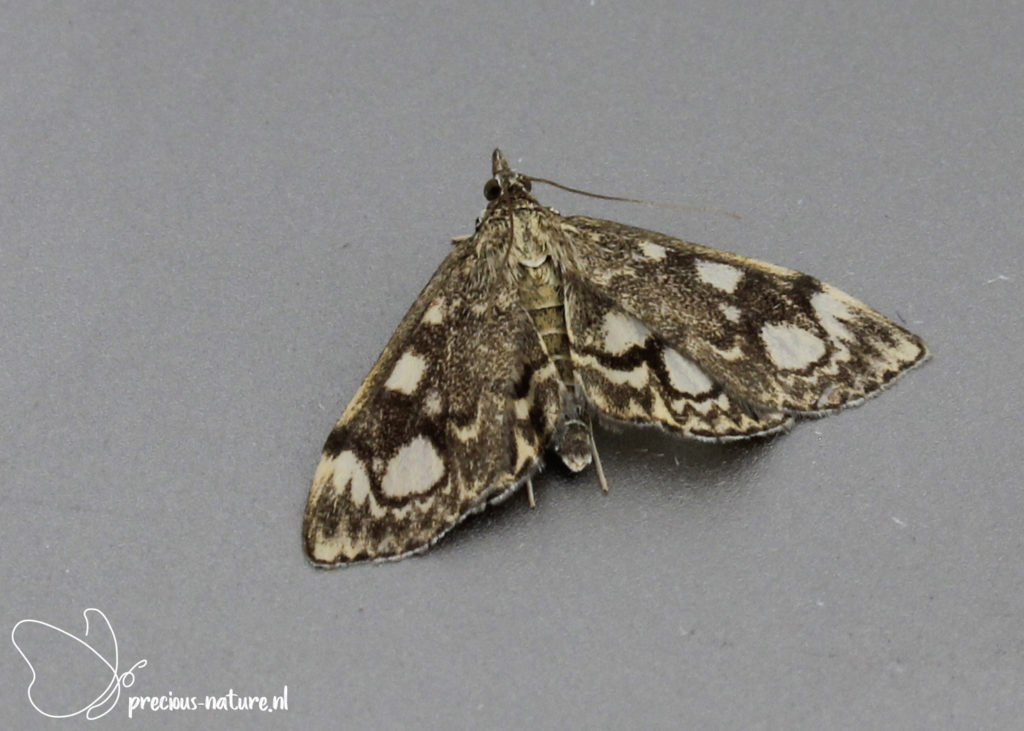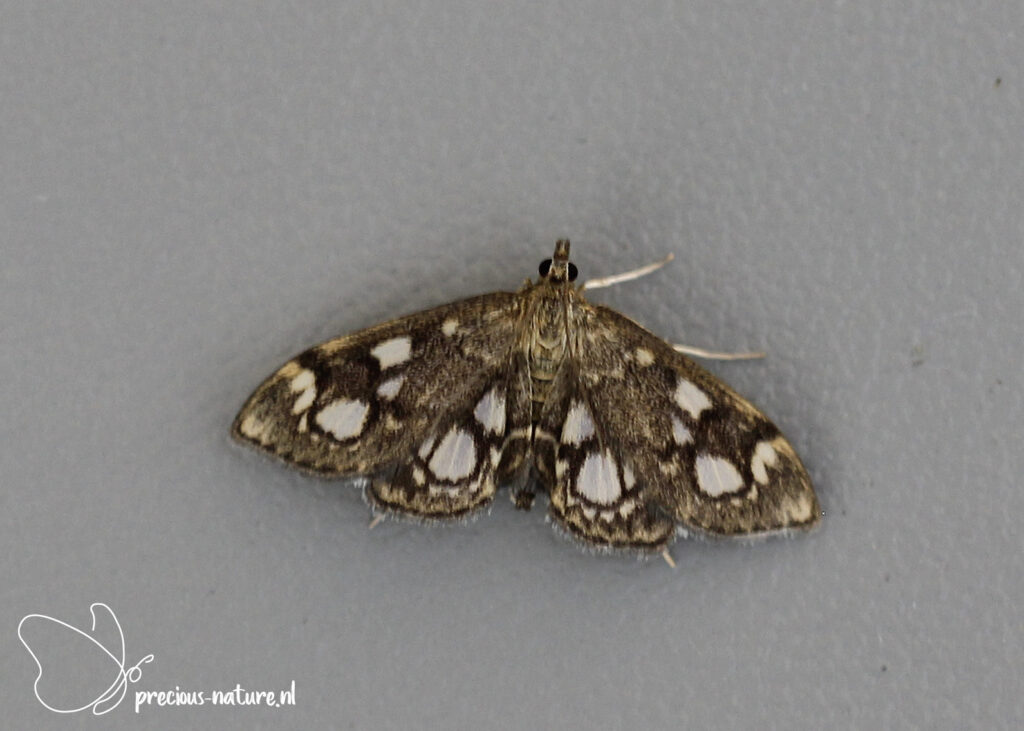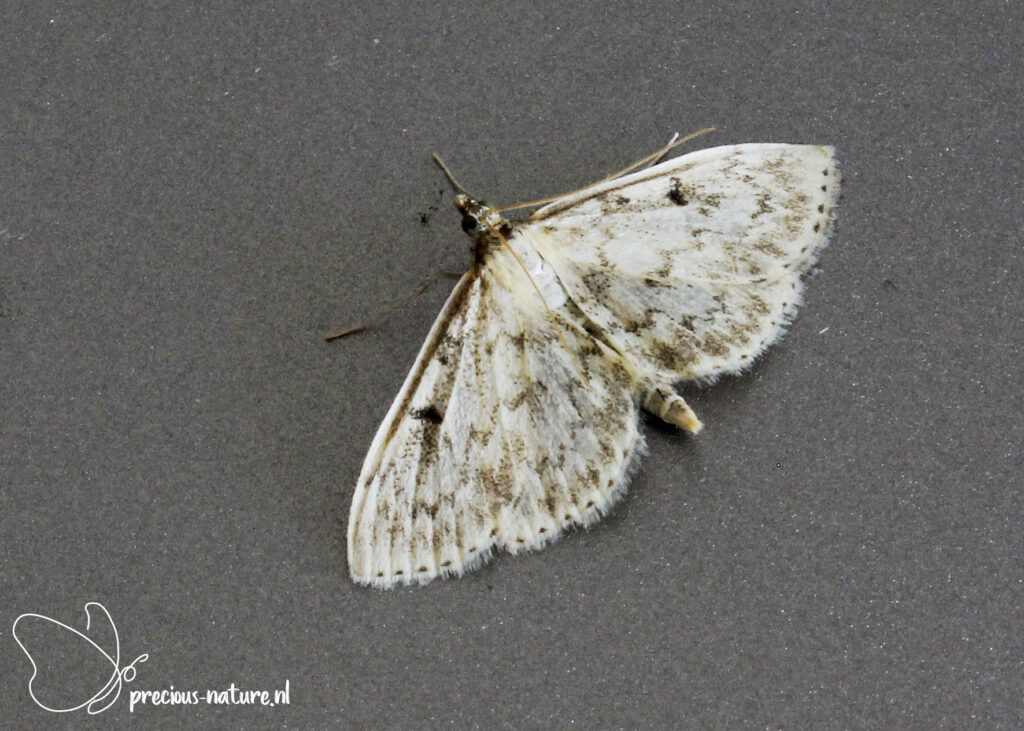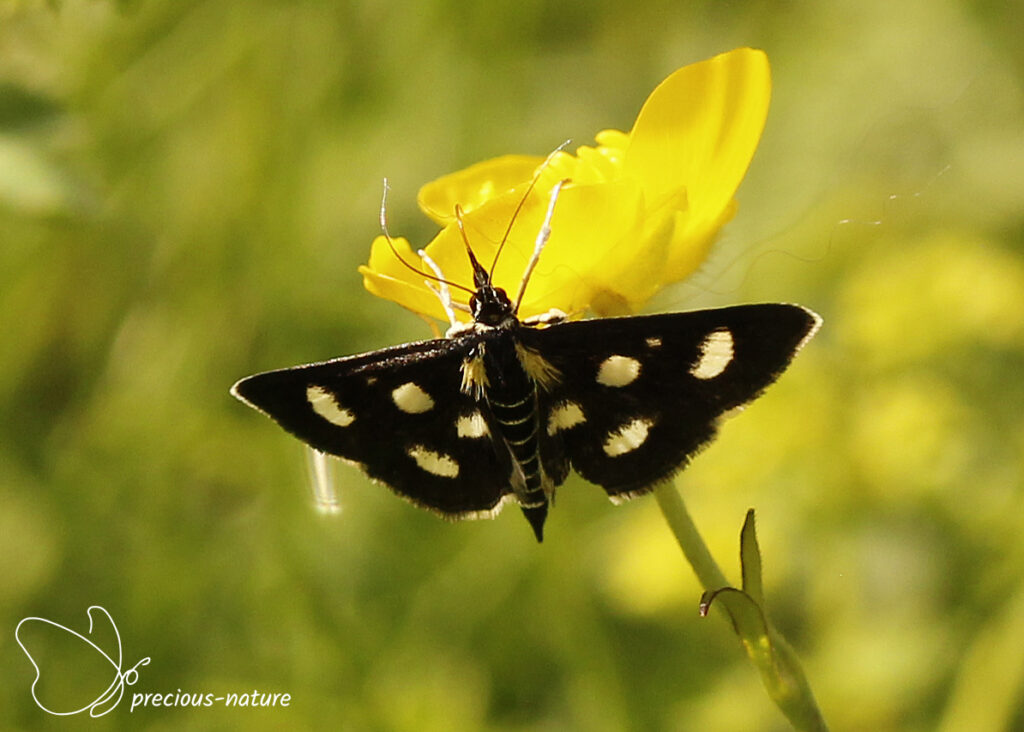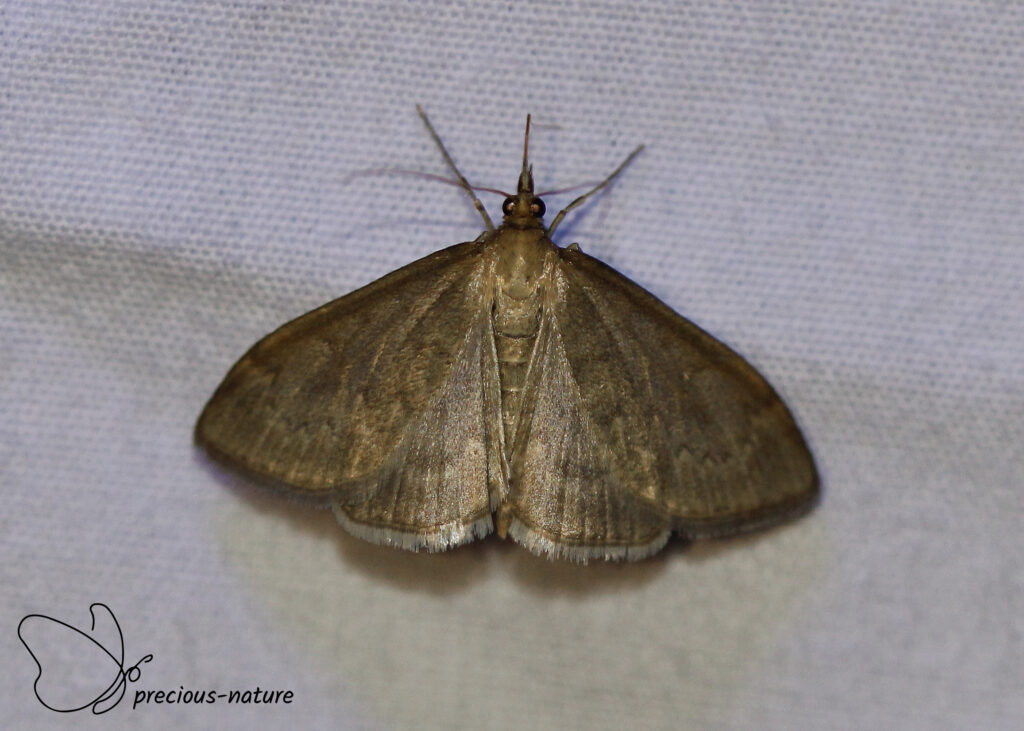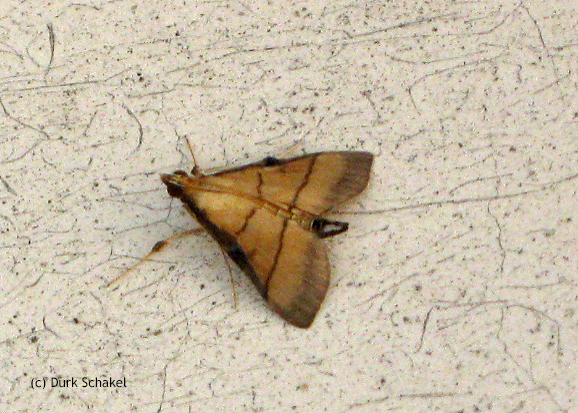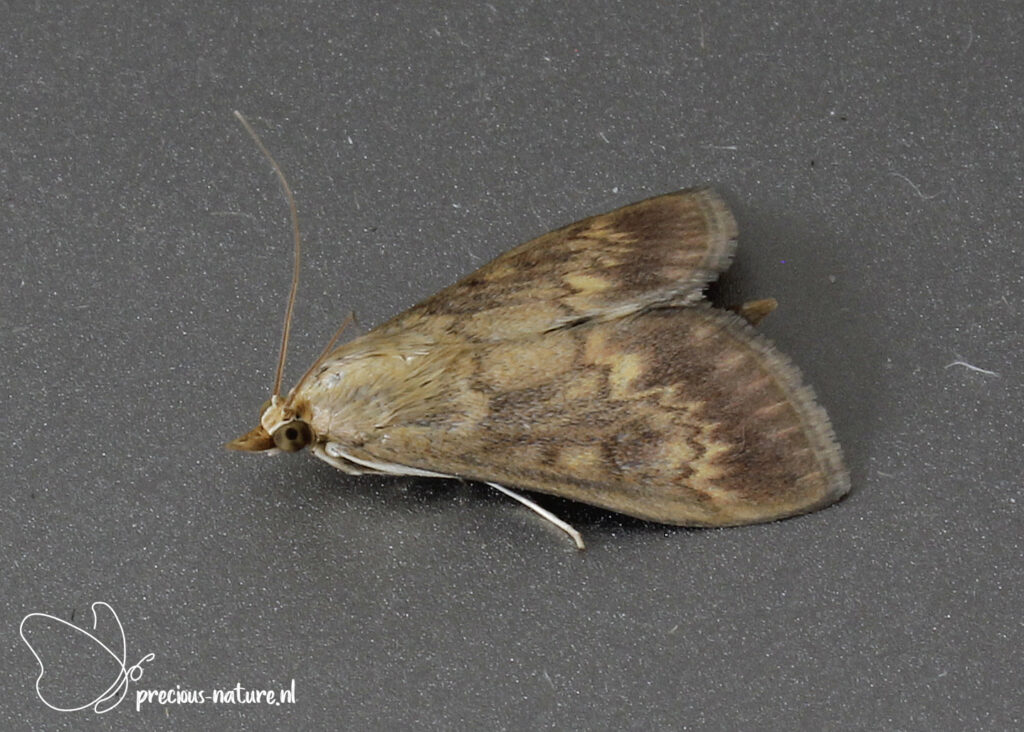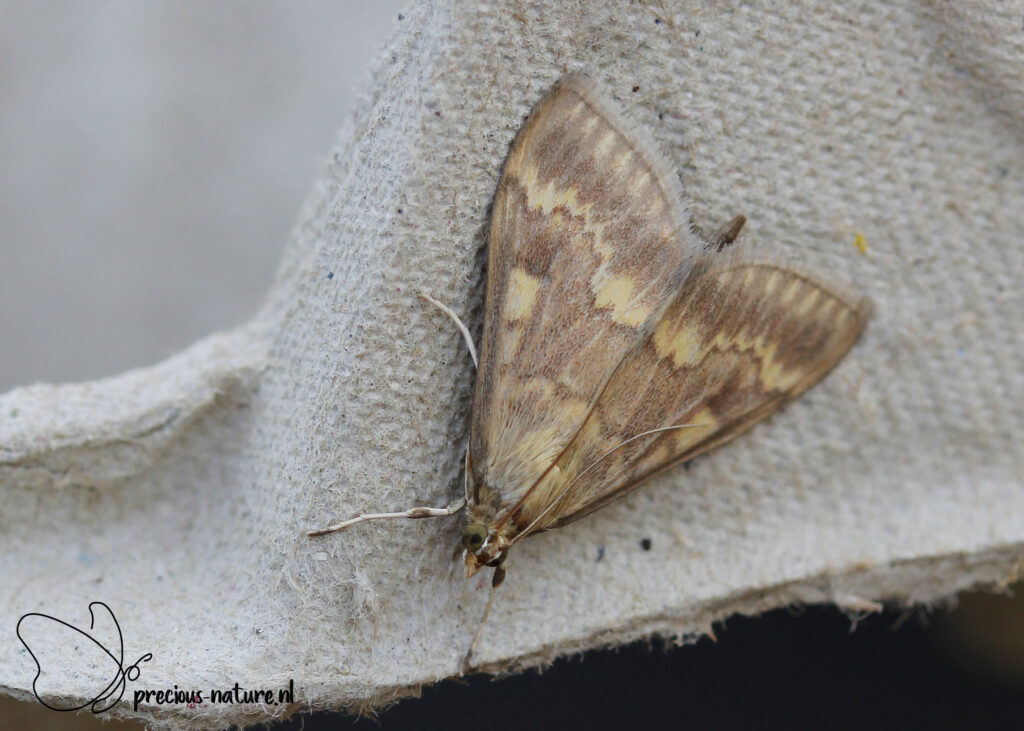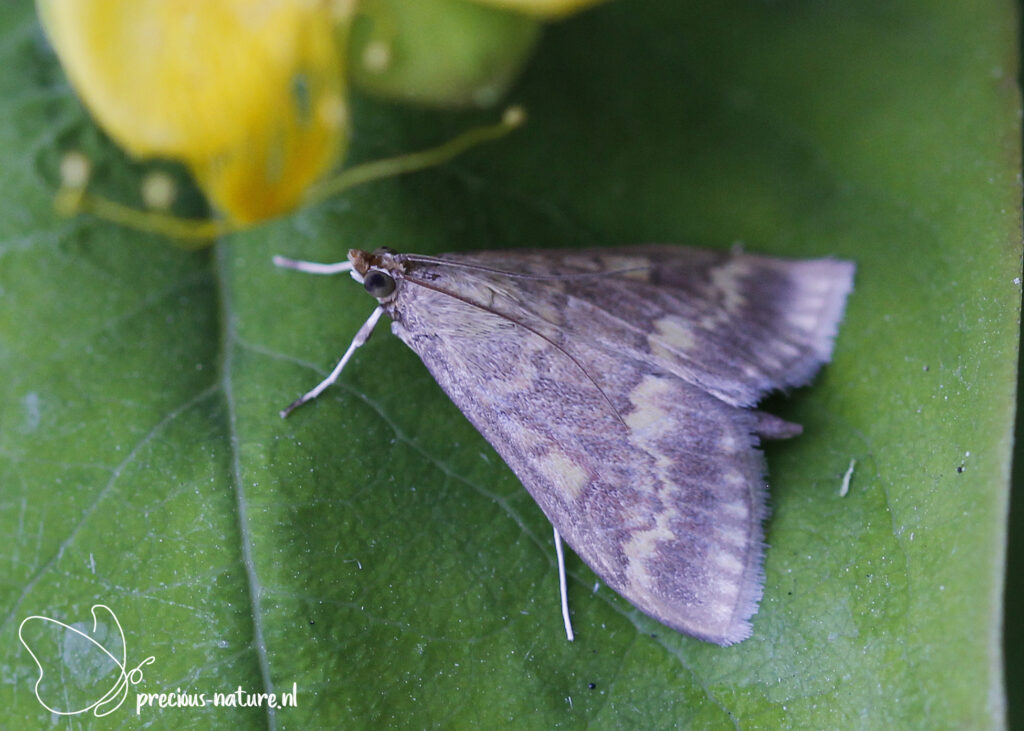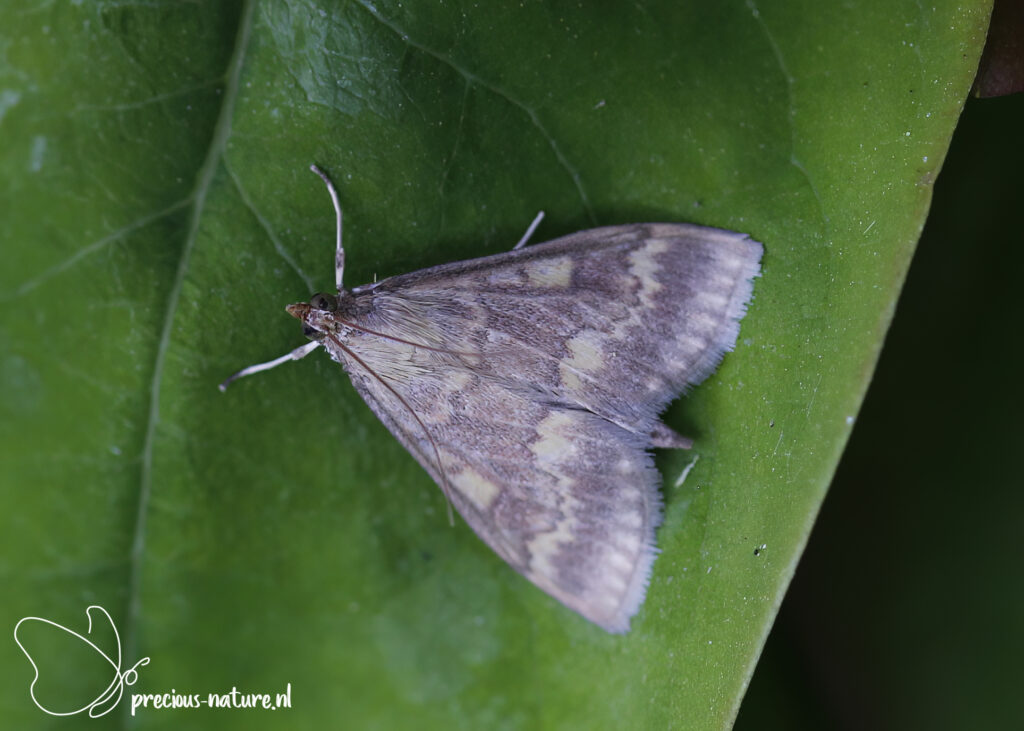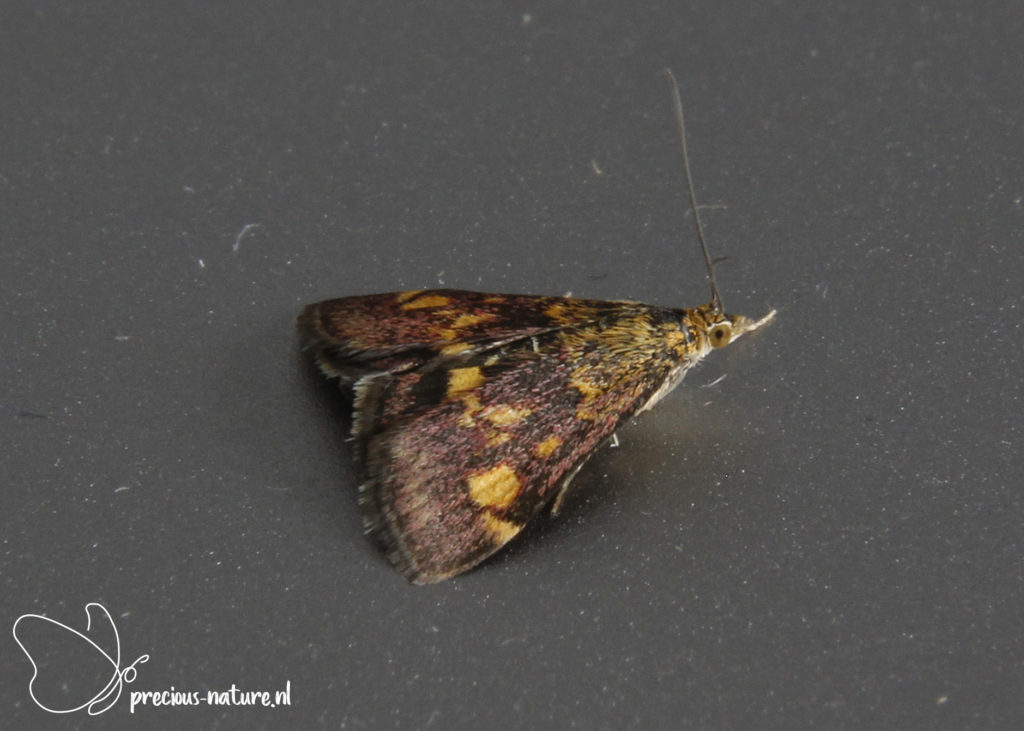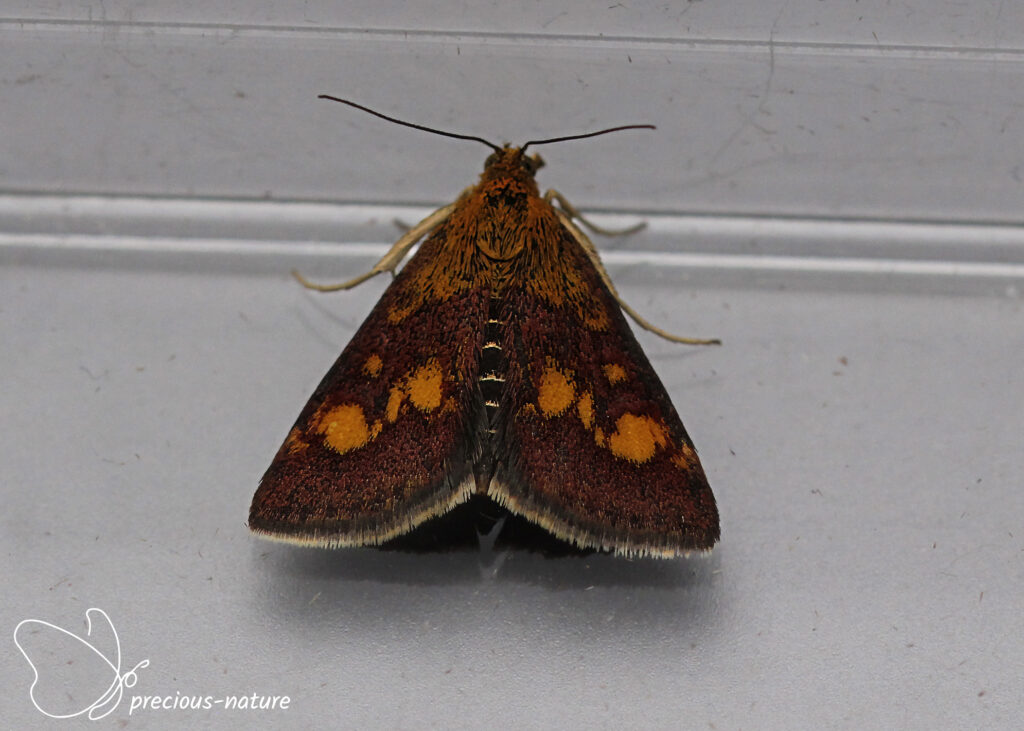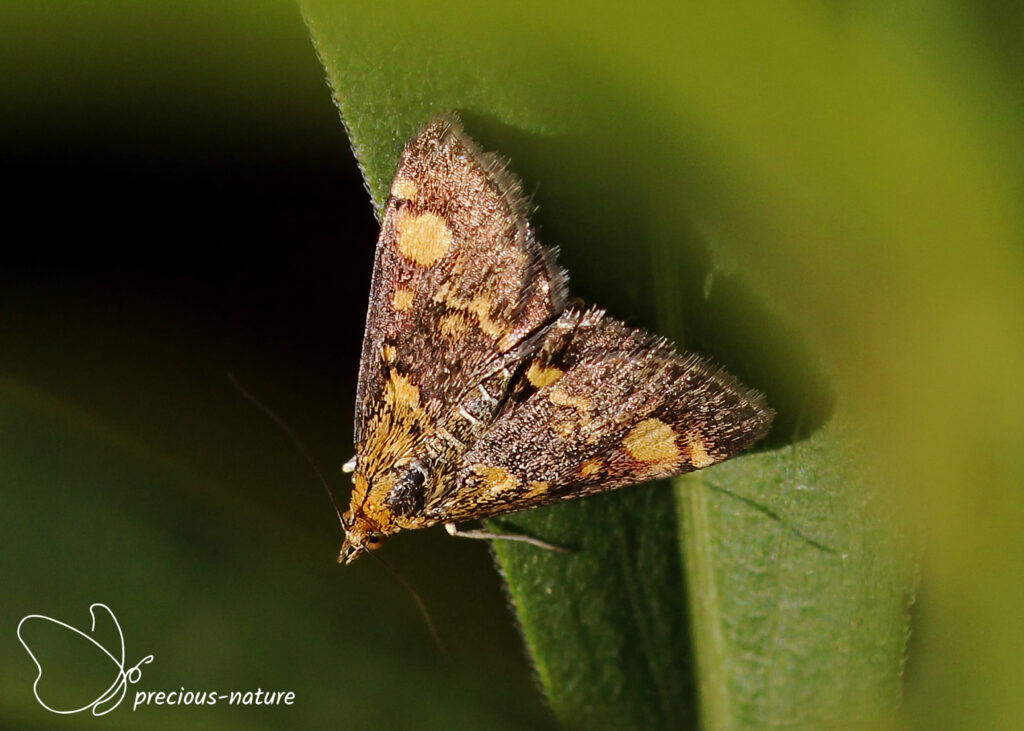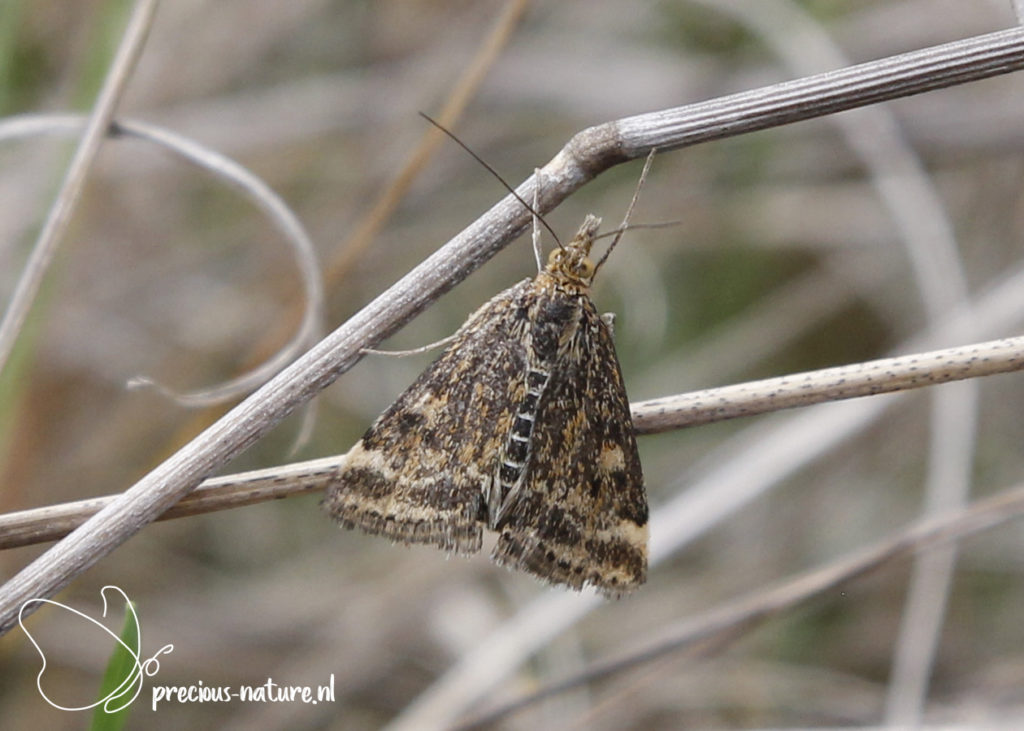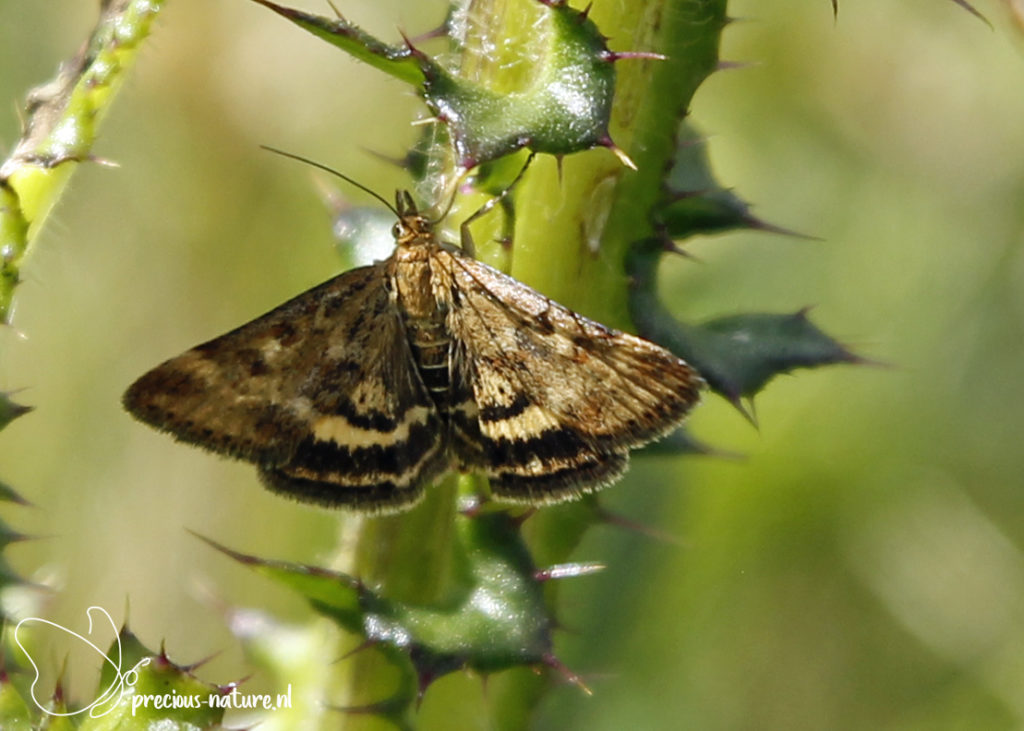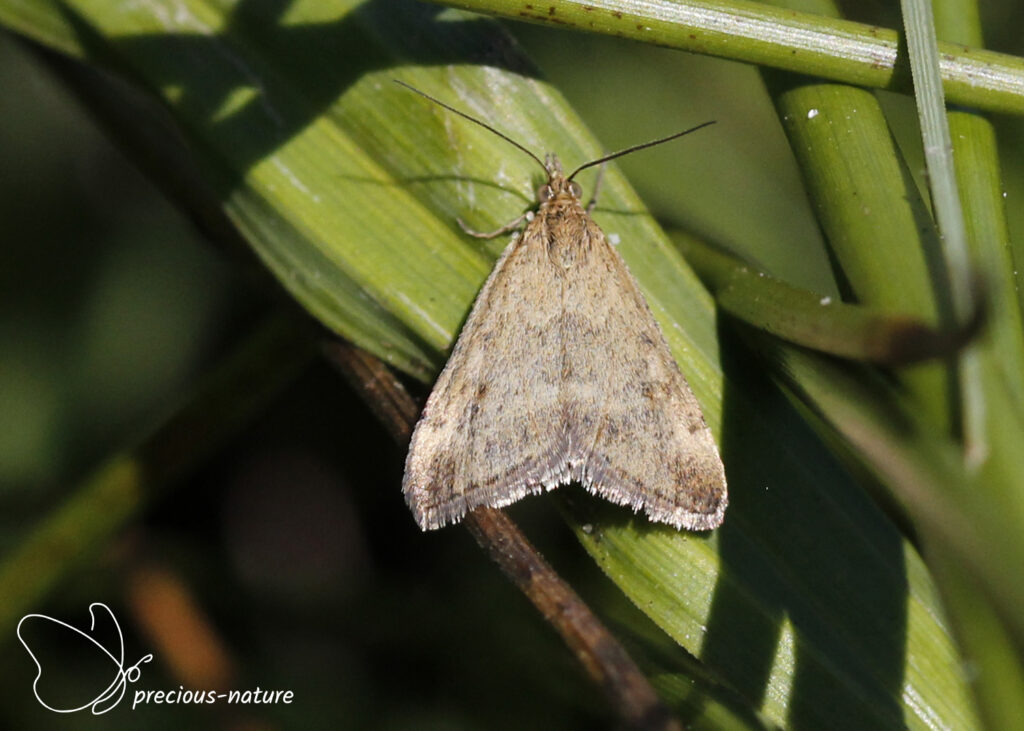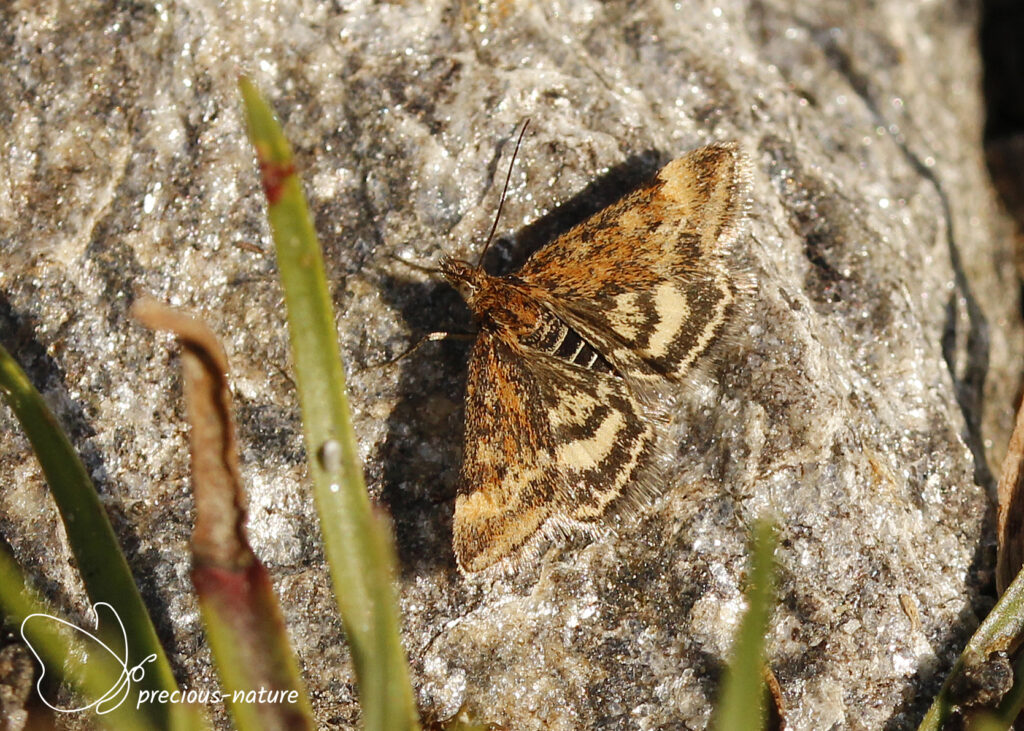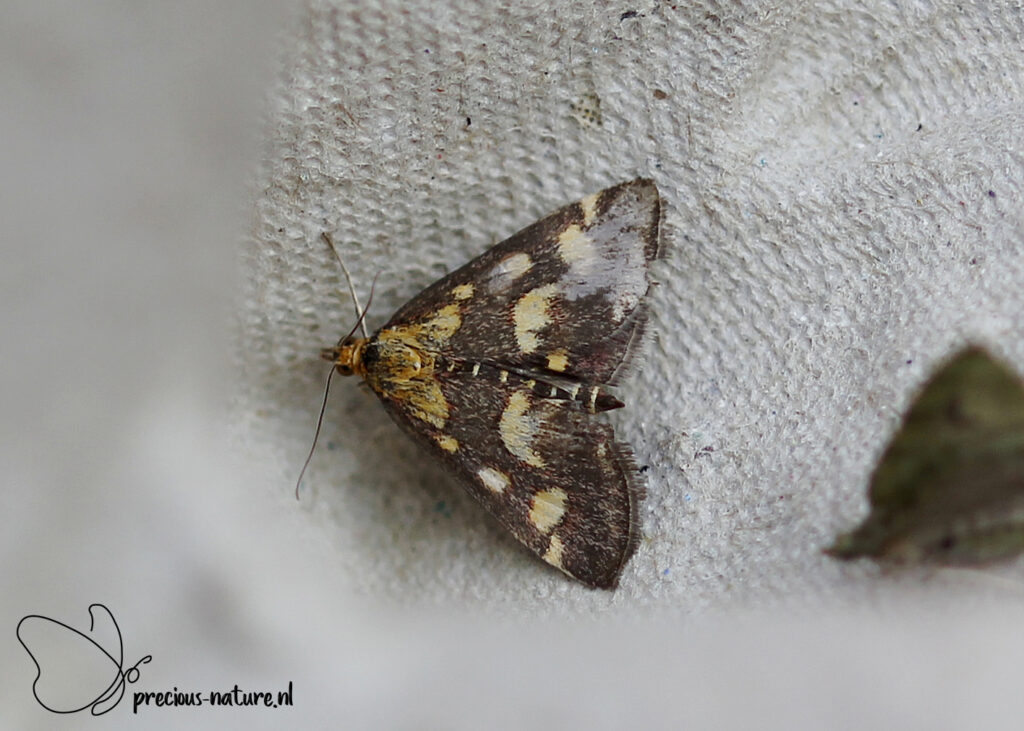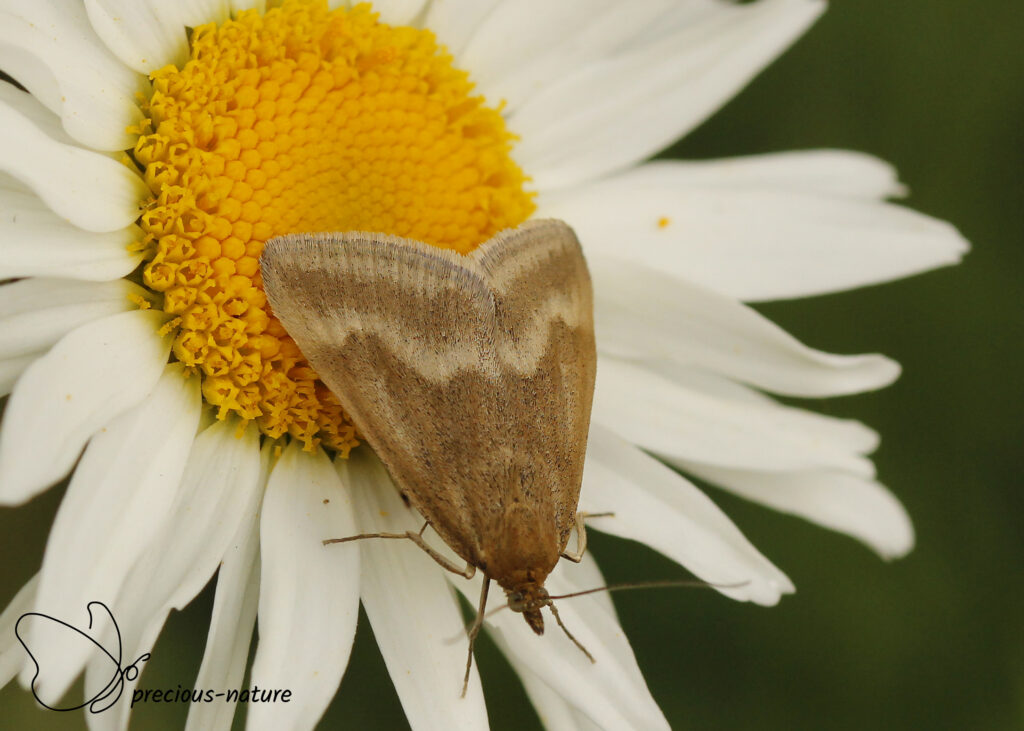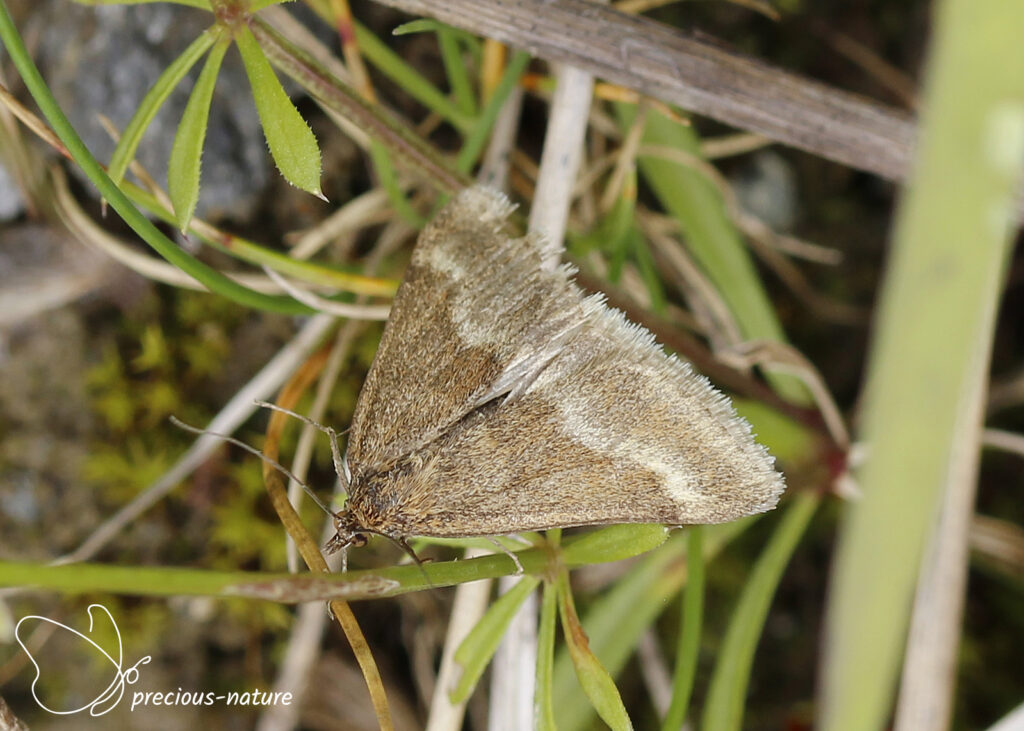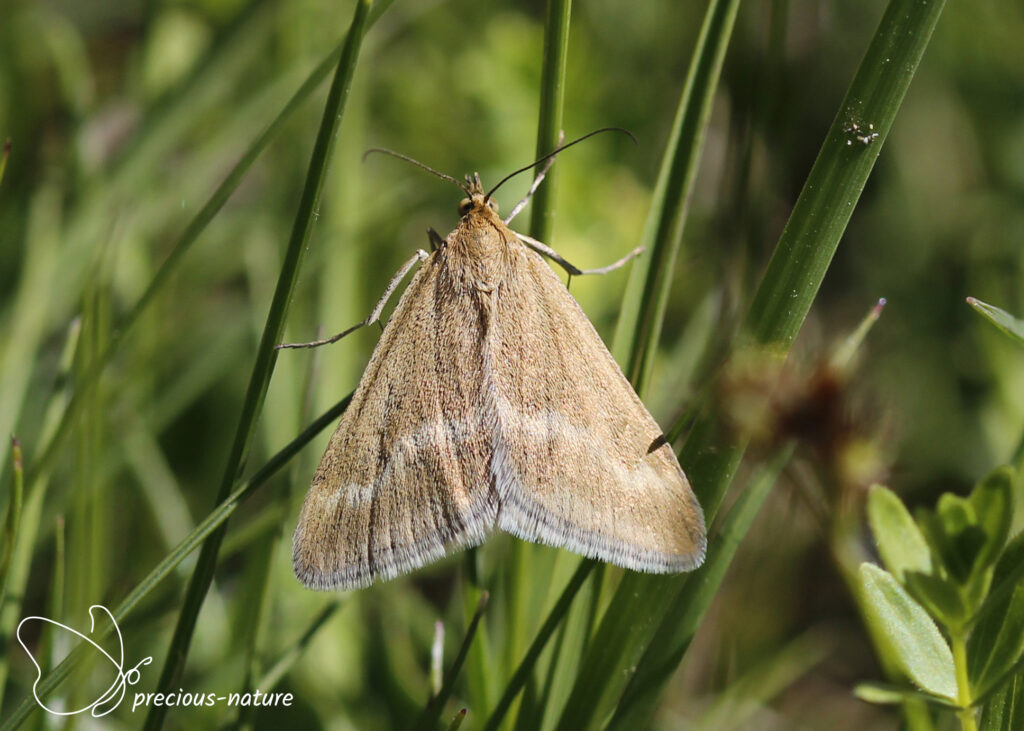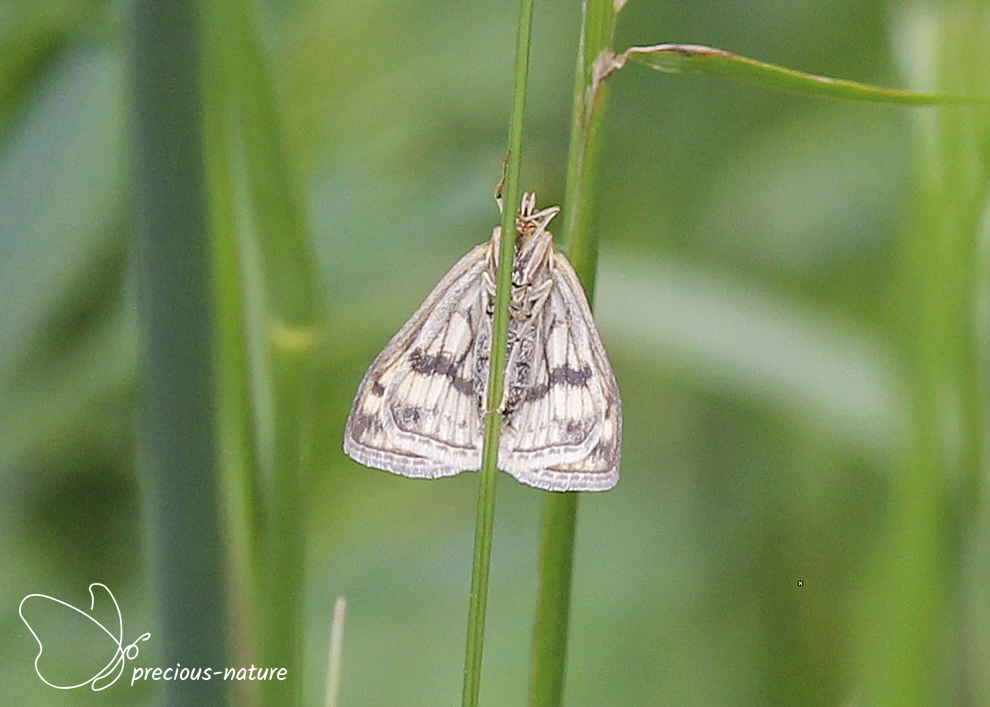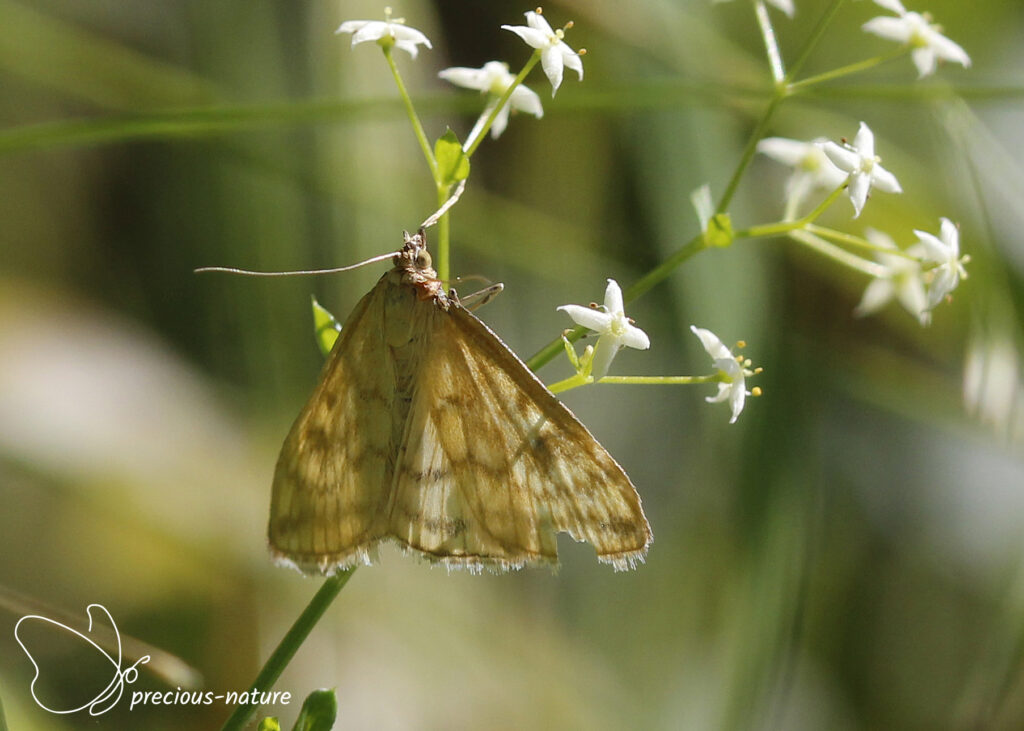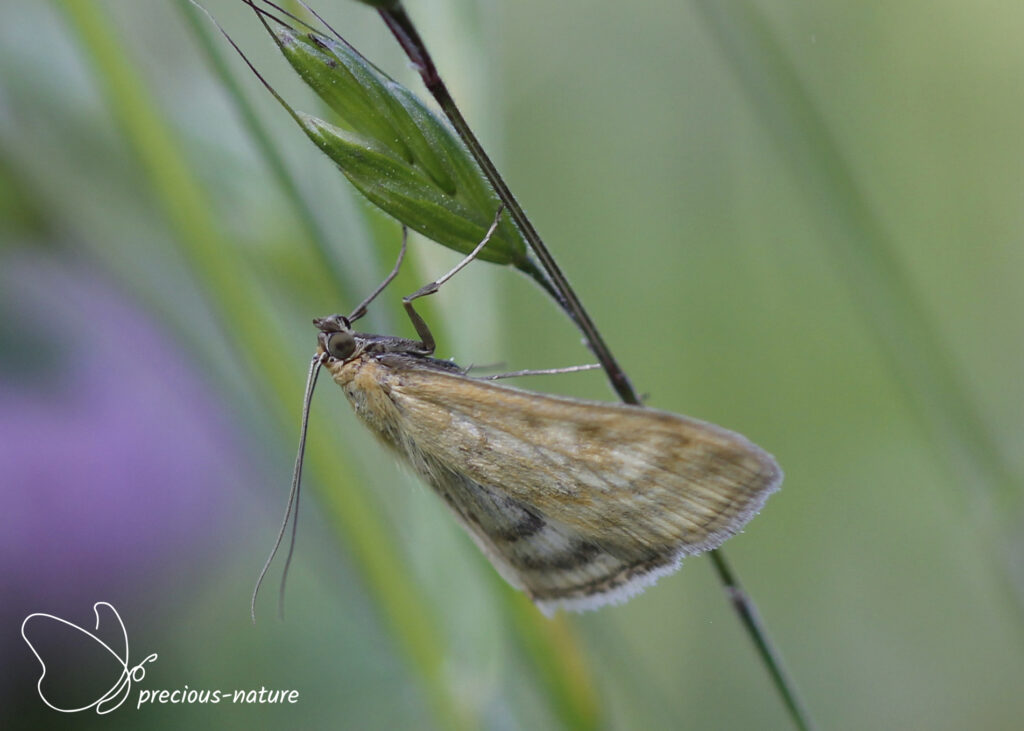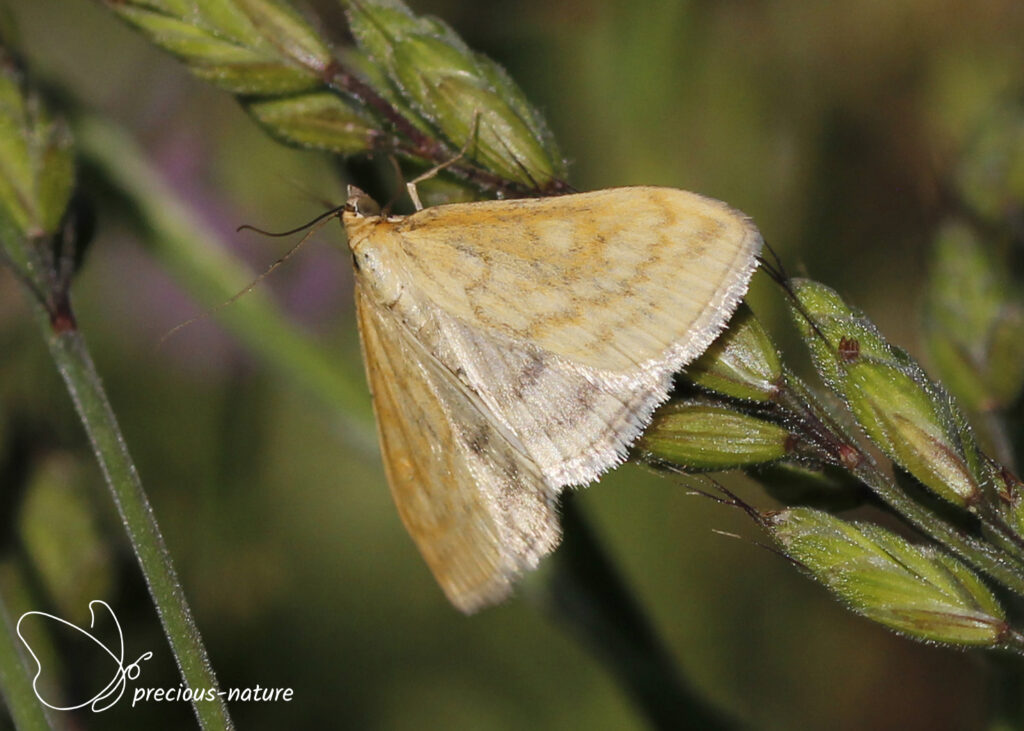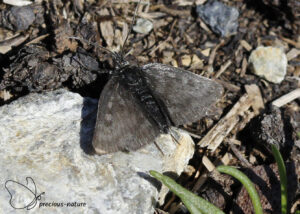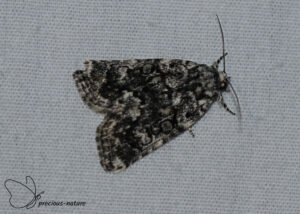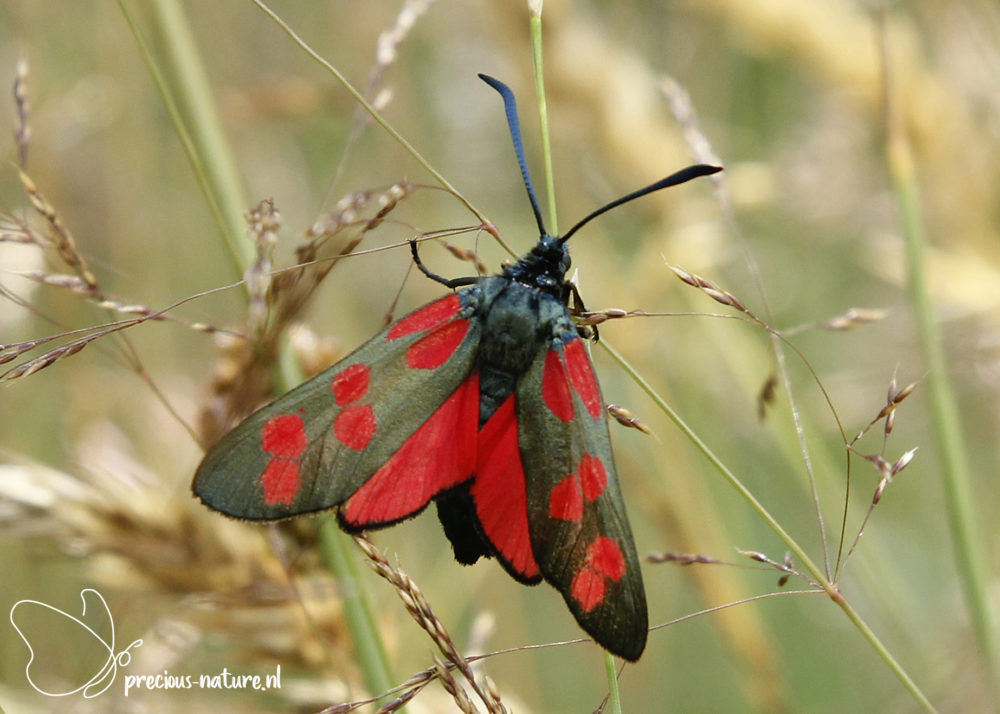Pyraustinae are a subfamily of the Grass Moths (Crambidae) and comprise approximately 1,400 species worldwide, most of which occur in the tropics. Previously, this family was seen as a subfamily of the snout moths (Pyralidae). They have a slender body, wide wings, and the abdomen often extends beyond the hindwings. Many species have larvae that bore into the stem or fruit of plants.
Genus: Anania
Ochreous Pearl – 2009 (NL)
(NCBI-index: 1.100908)
It took quite a while to identify the Ochreous Pearl (Anania crocealis). Eventually, I bought the proper literature that clearly stated it. Taking the photo’s lousy sharpness and the micro-moth’s position did not help either. Luckily, in 2023, I finally saw this moth again and took a better picture of it. The primary colour of the forewing is light yellow, sometimes darker specimens, with two brownish transverse lines that meander over the wing. A dark point can still be seen on some specimens. This grass moth flies in one generation from the end of May to September and has a 22-25 mm wingspan. The larvae feed in the centre of a shoot. Host plant: Common Fleabane. Dutch name: Gegolfde lichtmot. Frisian name: –
Flying period:

Genus: Anania
Small Magpie – 2016 (NL)
(NCBI-index: 1.594229)
The Small Magpie (Anania hortulata) has a striking appearance and is a larger species within the grass moth group. The top of the thorax is primarily yellow, and the rest of the body consists of alternating yellow and brown bands. The ground colour of the wing is white, with a band of brown spots on the ends of both wings. Near the apex of the wings is a second row of brown spots. It flies in one generation from June to August and has a 24-28 mm wingspan. The larvae can be found in a spun or rolled leaf before developing in a silk cocoon in a hollow stem or under the bark. Host plant: Nettle. Dutch name: Bonte brandnetelmot. Frisian name: –
Flying period:

Genus: Anania
Spotted Magpie – 2017 (NL)
(NCBI-index: 1.107567)
The Spotted Magpie (Anania coronata) is an easily recognisable micro-moth. The wings are dark brown with a few large off-white spots. There are several more minor white spots outside of those spots. The flight period spans one generation, from June to August, and the species is active at night. The wingspan is 22-26 mm, and the larvae feed on silk on the underside of a young leaf. Host plant: Ash, Privet, Lilac, Elder. Dutch name: Gewone coronamot. Frisian name: –
Flying period:

Genus: Anania
Fenland Pearl – 2020 (NL)
(NCBI-index: 1.140612)
In line with its name, the Fenland Pearl (Anania perlucidalis) has a round forewing and a pearly translucent white colour with a dark moon-shaped spot halfway down the costa. On both the fore- and hindwings, two dark brown wavy lines are visible along the termen, the outermost of which is wider than the inner. The flying period in one generation is from June to August, and the wingspan is 21-23 mm. The larvae feed on the underside of a rolled leaf. Host plant: Creeping Thistle, Marsh Thistle. Dutch name: Donkere coronamot. Frisian name: –
Flying period:

Genus: Anania
White-spotted Sable – 2024 (CH)
(NCBI-index: 1.005073)
The White-spotted Sable (Anania funebris) no longer occurs in the Netherlands. The last observation was halfway through the previous century. It is a very striking day-flying species. In addition to the spinning flight movement, this black grass moth has two large white spots on both the fore and hind wings. Sometimes you can see a small white spot on the forewing between the two white spots near the leading edge. The spots sometimes appear slightly yellowish. It depends on how the light falls on them. At the wing root of the forewing, there is a yellow-orange tuft of longer hairs. The abdomen is black with thin white rings and ends at a sharp point. The fringes of the wings are strikingly white. The flight period is one generation from May to July, and the wingspan is approximately 21 mm. Host plant: Broom, Heather broom, Goldenrod. Dutch name: Lichtbalmot. Frisian name: –
Flying period:

Genus: Anania
Rattle Pearl – 2025 (IT)
(NCBI-index: 1.100909)
The forewings of the Rattle Pearl (Anania fuscalis) are grey with a light yellowish-grey sheen and two dark transverse lines. These transverse lines are darker grey. The inner line is indistinct, barely curved, while the outer line is serrated, with an abrupt inward undulation towards the inner edge. On the outer edge, this transverse line has an indistinct whitish edge. The round dot and the transverse discal spot are indistinct, darker grey. The hindwings are light grey, tinged yellowish with two very faint discal spots. The transverse line on the hindwings is identical to the outer transverse line on the forewing. The flight period spans one generation, from mid-May to mid-August, and the wingspan ranges from 20 to 26 mm. Host plant: Common Cow-wheat, Yellow Rattle. Dutch name: Hengellichtmot. Frisian name: –
Flying period:

Genus: Cnaphalocrocis
Rice Leafroller – 2010 (JP)
(NCBI-index: 437488)
The Rice Leafroller (Cnaphalocrocis medinalis) is a species not found in Europe. I spotted this grass moth in Japan during a working visit to Kyoto. The wings are brownish-yellow with two distinct dark brown transverse lines. The fringe line consists of a brownish band, and the costa of the wing is brown-black. The wingspan is approximately 16 mm. The larva folds a leaf lengthwise and spins it closed, after which it feeds on the green tissue. Host plant: Rice. Dutch name: Rijstbladroller. Frisian name: –
Genus: Ostrinia
European Corn-borer – 2009 (NL)
(NCBI-index: 29057)
The European Corn-borer (Ostrinia nubilalis) is a micro-moth commonly found in the Netherlands. The male and female differ in colour from each other. The top of the male’s forewing is usually reddish-brown to brown, and that of the female is yellowish white. There is a yellow band on the outside of the median transverse line. It flies in one generation from June to August and has a 26-30 mm wingspan. The larvae bore into the stem close to the ground. Host plant: Maize. Dutch name: Maisboorder. Frisian name: –
Flying period:

Genus: Pyrausta
Small Purple and Gold – 2017 (NL)
(NCBI-index: 1.594338)
The Small Purple and Gold (Pyrausta aurata) is a small, striking purple micro-moth with a round golden-yellow dot along the costa close to the apex. Some specimens also have some small golden-yellow streaks on the wing. The Small Purple and Gold is very similar to the Common Purple and Gold (Pyrausta purpuralis) but does not have a distinct golden-yellow dot on the wing. The Common Purple and Gold has more yellow-white surfaces, and a white band can also be seen on the hindwing. That band is more yellow in the Small Purple and Gold. It flies in two generations from May to September and is active during the day. The wingspan is 18-20 mm, and the larvae feed in a spun web. Host plant: Mint, Calamint, and Marjoram. Dutch name: Muntvlinder. Frisian name: –
Flying period:

Genus: Pyrausta
Straw-barred Pearl – 2019 (NL)
(NCBI-index: 1.281420)
It took a while for the Straw-barred Pearl (Pyrausta despicata) to sit still so I could take a picture of it. This grass moth is mottled grey-brown, brown, or sand-colored. There are two dark dots in the middle of the wing, but with dark specimens, you hardly see those dots. There is a lighter zone along the costa of the wing and a lighter spot just in front of it. The flying period spans two generations, from April to September, and the wingspan ranges from 14 to 19 mm. The larvae feed in groups in silk spins. Host plant: Plantain. Dutch name: Weegbreemot. Frisian name: –
Flying period:

Genus: Pyrausta
Common Purple & Gold – 2023 (BE)
(NCBI-index: 1.101044)
With its orange-yellow markings on the purple wings, the purple moth (Pyrausta purpuralis) resembles the mint butterfly (Pyrausta aurata). On top of the forewing, in addition to three orange-yellow spots of different sizes, the purple moth has an irregularly more prominent spot that bends from the inner edge towards the wing tip. When at rest, it appears that this moth has a moustache. The top of the hindwing is dark brown with a broad yellow transverse line and a yellow round spot near the wing root. The flight period spans two generations, from March to early September, and the wingspan is approximately 20 mm. Host plant: Mint, Marjoram. Dutch name: Purpermot. Frisian name: –
Flying period:

Genus: Pyrausta
Folkestone Pearl – 2024 (CH)
(NCBI-index: 1.101042)
The Dutch name of the Folkestone Pearl (Pyrausta aerealis) is not official. I came across this grass moth a lot in Switzerland. The upperside of the forewings is predominantly light brown with a broad light yellow-white zigzagging transverse line on 3/4. A band of the same colour can be seen along the rear edge. The flight period is one generation from May to July, and the wingspan is 18-26 mm. Host plant: Yellow Everlasting, Catsfoot. Dutch name: Witstreeplichtmot. Frisian name: –
Flying period:

Genus: Sitochroa
Lesser Pearl – 2024 (CH)
(NCBI-index: 1.344720)
The forewing of the Lesser Pearl (Sitochroa verticalis) is light yellow with orange-yellow markings. The serrated cross line on 2/3 is slightly curved. Just past halfway along the wing is a kidney-shaped spot, followed by a round spot. It looks very similar to the European Corn-borer (Ostrinia nubilalis), but the upperside of the forewing shows subtle differences, and the underside has striking dark contrasting markings. The flying period is one generation, sometimes a second, from June to August, and the wingspan is 30-34 mm. Host plant: Thistle, Broom, Goosefoot. Dutch name: Fijne golfbandmot. Frisian name: –
Flying period:



